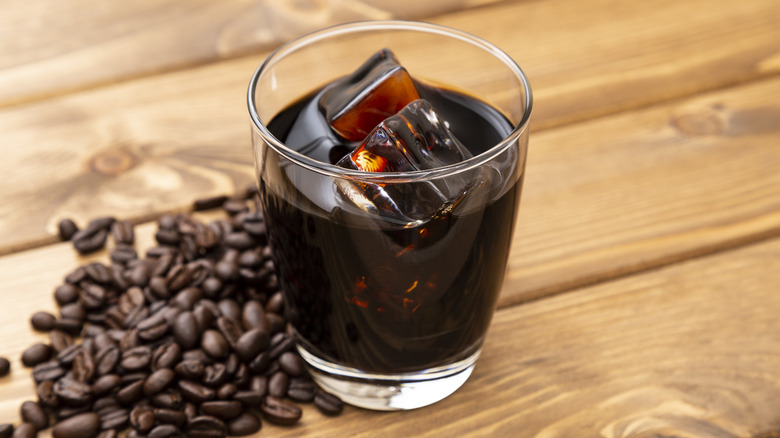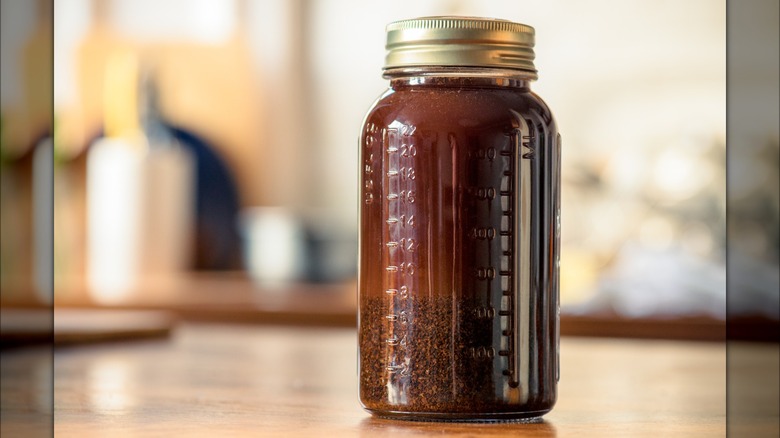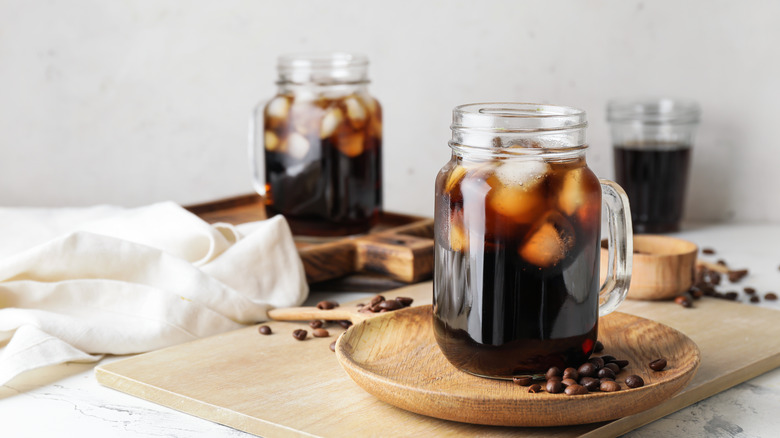The Scientific Reason Your Cold Brew Doesn't Taste Quite Right
For coffee drinkers, there's nothing as frustrating as a cup of joe that clearly tastes off. That frustration only grows if it's homemade cold brew that's not quite right since it can take up to 24 hours for the beans to steep. The scientifically backed spot where cold brew can easily go wrong? The straining step.
Since straining is essentially the last step (only diluting and storage are left), it's easy to get excited and rush it by pushing or squeezing the water out of the grounds. However, doing so also helps extract more of the natural bitterness in coffee. To get around this, you need the right gear and some patience. One top method is to use the Toddy system that Starbucks used to employ, but failing that, you can slowly strain using either a nut milk bag or a simple cheesecloth and strainer combo. What you don't want to use is a standard coffee filter. These take much longer than the other methods, plus there's always a chance they could rip and leave you with a huge mess.
The top three methods for straining cold brew grounds
Between the three methods, the Toddy system is the easiest to use at home. It comes with everything you need, including felt filters, paper filters, and a lidded decanter to collect the coffee as you strain it as well as to keep it stored in the refrigerator for a week or two. However, this ease of use comes at a cost, literally and figuratively. The main issue is the system is large, which makes it difficult to find storage space. Additionally, because it has so many parts, it's also the hardest to clean.
A more affordable, though messier, option is to use a strainer lined with cheesecloth to catch the smallest grounds. You need to pour carefully and slowly when using this method to prevent sloshing and to stop the force of flowing coffee from pressing some bitterness out of the grounds. An alternative to the cheesecloth and strainer combo is to use a nut milk bag — like a kind of giant tea bag – for your coffee grounds. When they've steeped long enough, remove the bag and dump the grounds. The downside to this method is you usually need to squeeze it slightly to get more liquid coffee out of the bag, introducing some of that bitterness you're trying to avoid, but the almost non-existent cleanup can be worth it.
Other tricks for better cold brew
The secret straining tip to prevent nasty bitterness isn't the only small change you can make for better homemade cold brew. The two most important tricks may seem obvious, but are always worth repeating: Use the best quality coffee beans and the cleanest filtered water you can get. Cold brew is strong, even after being diluted, so the last thing you want is a full jar of low-quality java.
Another trick involving the coffee beans is to grind them to the right coarseness. Roughly the size of coarse sugar should do. This helps your water move around the beans, soaking them all evenly. Plus, it helps prevent over-extraction during the long brewing time, further lowering your cold brew's bitterness. Lastly, you can stretch your storage time a bit by using an airtight container. This limits your coffee's contact with oxygen, delaying and reducing the flavor breakdown resulting from oxidation.


